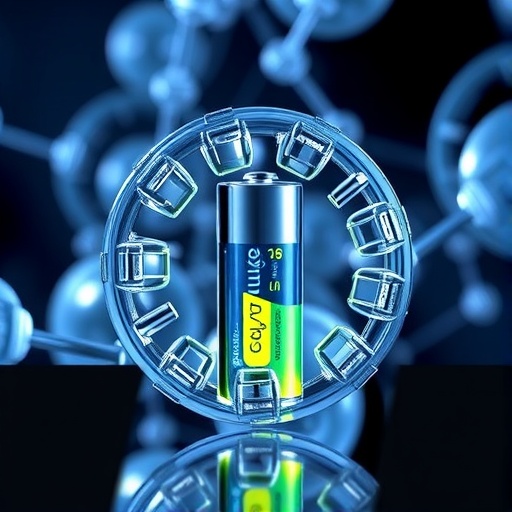
High-energy-density lithium metal batteries (LMBs) are at the forefront of advancing green energy solutions and transforming energy storage technologies. These batteries are particularly sought after due to their exceptional energy capacity and potential to replace conventional lithium-ion batteries. However, despite their promise, the challenges associated with lithium metal anodes (LMA) remain significant hurdles that researchers must overcome. The use of conventional ester-based electrolytes, which have high oxidation windows, often leads to unstable electrode interfaces. This instability results in rapid capacity decay and the perilous growth of lithium dendrites, which can severely impair battery performance and safety.
Addressing the inherent issues related to lithium metal anodes is vital for harnessing the full potential of LMBs. One of the fundamental strategies being pursued is the modification of electrolytes to better regulate the interfacial inorganic components. Strengthening the solid electrolyte interphase (SEI) is critical, as it protects the lithium metal from detrimental side reactions that degrade battery performance. Researchers are exploring the development of efficient electrolyte additives as an optimal approach, due to their cost-effectiveness and practical application in real-world scenarios.
In a groundbreaking study published in the esteemed journal National Science Review, Professor Yuping Wu and Associate Professor Tao Wang from Southeast University introduced a novel thioether-based electrolyte additive known as 1,3-dithiane. This innovative additive plays a pivotal role in restructuring electrode interfaces through a synergistic mechanism that utilizes three distinct processes. The findings from this research could mark a significant advancement in achieving long-cycle and high-performance lithium metal batteries.
The first mechanism by which 1,3-dithiane operates involves polarity inversion and the suppression of organic components in the SEI. The unique structure of the compound allows for highly acidic hydrogen at the 2-methylene position to react with alkyl lithium, resulting in the formation of a crucial intermediate known as 2-lithio-1,3-dithiane. This chemical transformation plays a vital role in minimizing the formation of unstable organic materials in the SEI. The decomposition of this intermediate results in a sulfur-rich interface on the lithium surface, transforming delicate organics into more stable sulfur-containing inorganic compounds. Concurrently, this additive significantly enhances the resistance of carbonate solvents to nucleophilic attacks, which is an essential improvement for the longevity of battery performance.
The second aspect of 1,3-dithiane’s action on the battery interface is its contribution to kinetic and thermodynamic optimization. By utilizing the preferential adsorption kinetics and redox properties inherent in this thioether compound, the additive helps to create a highly stable and dynamic interface on the electrodes. This enhanced interface fosters the participation of PF6– anions in the film formation process. As a result, a robust inorganic-rich interphase with high ionic conductivity is constructed, significantly improving the overall efficiency of the battery’s operation.
Perhaps the most surprising aspect of the research is the additive’s substantial sulfur content, which reaches an impressive 53.5%. This level of sulfur utilization is nearly double that of traditional sulfur additives, allowing for effective interfacial regulation even at low concentrations. Such a breakthrough not only paves the way for advancements in thioether additives but also opens new research avenues and development opportunities in the field of battery technology.
The practical implications of using 1,3-dithiane as an electrolyte additive were showcased in experiments with Li||LiFePO4 full cells. These cells, utilizing the modified electrolyte, exhibited an extraordinary capacity retention of 83.6% after an impressive 3,300 cycles at a 1C rate. Furthermore, lab-fabricated cells demonstrated an outstanding capacity retention of 93.1% after 150 cycles, highlighting a tenfold extension in overall cycle life. Such remarkable results underline the potential of 1,3-dithiane in enabling long-cycle lithium metal batteries even under quasi-commercial conditions.
Beyond these results, the research represents a low-cost universal strategy for constructing stable interfaces that are rich in inorganic materials. This advancement has the potential to catalyze further developments in LMBs, driving practical improvements in energy storage solutions and expanding the options available for battery manufacturers.
The significance of this research is underscored by the support it received from prominent institutions, including the National Key R&D Program of China, the National Natural Science Foundation of China, the Jiangsu Provincial Key R&D Program, and the Southeast University High-Level Talent Startup Fund. This backing illustrates the importance attributed to ongoing research and innovation in the realm of energy storage and battery technology.
In conclusion, the discovery and implementation of 1,3-dithiane as a thioether-based electrolyte additive represent a monumental stride forward in the quest to develop efficient, long-lasting lithium metal batteries. This additive addresses critical challenges faced by lithium metal anodes, thereby reinforcing their interfaces and significantly improving overall battery performance. As the research community continues to unravel the complexities of battery technology, such innovations will be paramount in ensuring a sustainable and efficient energy future.
Subject of Research: Thioether-based electrolyte additives for lithium metal batteries
Article Title: A Novel Thioether-based Electrolyte Additive for Lithium Metal Batteries
News Publication Date: October 2023
Web References: National Science Review DOI
References: Research funded by National Key R&D Program of China, National Natural Science Foundation of China, Jiangsu Provincial Key R&D Program, Southeast University High-Level Talent Startup Fund.
Image Credits: ©Science China Press
Keywords
Lithium metal batteries, thioether, electrolyte additives, solid electrolyte interphase, energy storage technology, capacity retention, sulfur utilization, battery performance, inorganic-rich interphase, electrode interface.
Tags: battery performance enhancementcyclic thioether additiveelectrolyte modification strategiesenergy storage technologiesgreen energy solutionshigh energy density batterieslithium dendrite growthlithium metal anodeslithium-metal batteriesresearch in battery technologysolid-electrolyte interphasestable battery cycles





